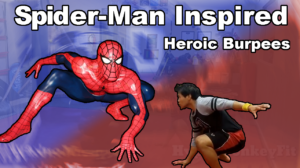Squeeze your hips, clinch your butt, or feet together.
These are probably some of the most frequently used statements given out when trying to learn the handstand. Its also pretty common that enthusiasts who are just learning attempt to squeeze or clinch but still don’t get the desired result of keeping their body elevated and stable.
Where does the problem lie?
It comes in the form of visualization. The directives given for squeezing the hips or clinching the butt are mechanical, even if there is feeling behind them.
i.e. SQUUUUUUEEEEZZZZEEEE those hips!
Although the mechanics are correct, its hard to put together the sensations about what you are supposed to feel when you squeeze or clinch.
So how do we get past this issue?
Its actually pretty simple. You utilize a visualization that is also a mechanical directive.
Now this is something I look for when I teach. There are things that everybody has done which they can relate to a skill task. In regards to squeezing the hips. One things that everybody has done was “hold it in.”
Don’t worry, I’m going to expand on this.
Have you every had to go #1(title of the post!) but were far away from your destination by distance or even a long line. What do you do? You turn legs in, maybe jump around a bit and squeeze the heck out of your pelvic floor, adductors, etc. Everybody knows the feeling because everyone needs to use the restroom at some point, and if you don’t, wow. So one of my more commonly used visualizations has changed from squeeze those hips, to pretend you need to pee and have to hold it in. Without a doubt, its simple, directed, and the result speaks for itself.
Why don’t you give it a try and see if you can hold that inversion longer by stopping #1.
Stay Inverted!
-Jonathan Magno
PS If you want all the tricks of the trade for hand balancing, check out the Secrets of the Handstand Bundle!















